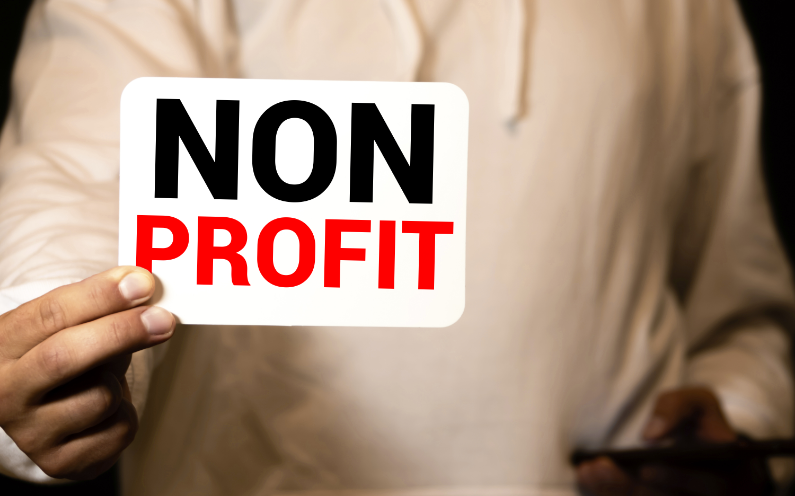A razor-sharp nonprofit marketing team can help an organization raise awareness, attract donors, and deliver messaging right where it’s needed. Unfortunately, such teams are often up against tight budgets, limited resources, and the weight of achieving big organizational goals.
The results of nonprofit marketing efforts will only be as good as the methods used to achieve them. Keep reading to learn about the 15 best nonprofit marketing tools you can utilize to help further your organization’s mission this year.
Your Business Marketer is dedicated to providing expert marketing services and industry-specific resources. Reach out to our team today to learn how we can help your organization thrive.
Nonprofit Marketing: 15 Essential Tools and Strategies
Effective nonprofit marketing strategies need to cater to diverse market segments. This might include potential and current donors, volunteers, and those intended to benefit from your services.
Determining the best marketing tools to reach each audience segment will provide a roadmap for organizational marketing strategies. Adaptability, ease of use, and value added are all hallmarks of great marketing tools.
Here are the 15 best nonprofit marketing tools and strategies you can start implementing within your organization today.
1. A Great Website
A clean, functional website can serve as a base of operations for your entire organization. Aside from raising awareness about your cause, effective landing pages can help attract potential donors and/or volunteers.
A website that’s easy to navigate serves as a space to provide essential resources to your customers/constituents, along with hosting a platform through which supporters can donate money.
2. Social Media Channels
Social media provides access to global audiences. Whether you have the funds to invest in paid social ad campaigns or not, setting up and maintaining social media accounts for your organization can be a priceless marketing tool.
Aside from spreading awareness and updating followers on fundraising campaigns or organizational goals, social channels create an avenue for sharing resources, educating community members, and engaging in an online dialogue.
LinkedIn, for example, could give you access to all types of business people and community leaders. It’s a fast-growing platform that may enable you to connect more directly with your target audience.
3. An Email Newsletter
Gathering and maintaining separate email lists for diverse audience segments makes it easy to communicate with each group via email. Organizations might want to tailor specific messaging to groups like donors, volunteers, and customers/constituents.
An email newsletter sent at regular intervals will help keep your organization front-of-mind, along with providing a highly deliverable method of communicating updates and calls to action.
4. Downloadable Resources
Depending on your nonprofit’s ultimate goal, educating community members and providing valuable resources can help position you as a thought leader and go-to expert.
Foster trust, educate the public and make crucial information accessible by building a downloadable resource library on your website.
Tip: if you’re hiring a marketer or copywriter to create something like this, it’s often referred to as a “lead magnet” or “premium content.” People trade you their email address for something of value.
5. Public Speaking Engagements
Spread the word about your cause by making sure your organization is represented at various public speaking engagements. This can include benefits, conferences, conventions, and even webinars, online classes, or podcast appearances.
Tip: Remember what killed the radio star. If your nonprofit marketing team can get comfortable on camera, video will go a long way in increasing awareness and engagement.
6. Set Up at Live Events
Create a presence by setting up a booth at high-traffic events like festivals, conventions, or trade shows. Yes, these still happen and, depending on your region, may be back in full force. By showing up with materials like informative handouts, email signup lists, digital business cards, scannable QR codes, and donation forms, you can reach a broader audience. Not to mention educate the public and gain new donors, volunteers, and customers/clients.
7. Run an Active Blog
Maintaining an active blog on your website is a great way to update your audience and provide ongoing information and resources. When done right, it also provides an avenue for your team to incorporate SEO best practices. This means your site and resources will show up in search results more often, and at a higher ranking.
Tip: SEO is often an expert endeavor. Check this out if you need help.
SEO is a powerful nonprofit marketing tool that will help your organization’s website show up in online search results. Greater search visibility makes your nonprofit more discoverable, lends your brand more authority, and ultimately helps spread awareness of your mission.
8. Community Engagement Programs
Become an active member of your local community to increase brand recognition and put you in direct contact with potential donors, volunteers, and those you are looking to serve.
Organizations can increase community engagement by participating in local events, enrolling local ambassadors, and opening discussions with community stakeholders.
Tip: Private Facebook groups and LinkedIn groups are two places becoming super popular for digital local gatherings. You may also investigate Reddit threads and neighborhood apps like NextDoor.
9. Press Releases and Community Updates
Transparency and authenticity are essential for fostering trust and nurturing relationships with stakeholders. Press releases can help your organization communicate upcoming goals, measured progress, new community partnerships, and positive outcomes.
10. Build Online Communities
Consider starting one or several
online communities on forums or social groups. By providing a safe place for stakeholders to engage in relevant discussions, you can encourage community participation and allow for an exchange of information. An online community can serve as a readily-available pool of resources for brainstorming ideas, providing feedback, and creating networking opportunities.
11. Guest Publishing to Raise Awareness
Guest publishing blogs or articles on websites or other platforms can help your organization position itself as a thought leader while reaching new audiences. Representatives or ambassadors can also appear as guest experts or contributors on other platforms, like news programs and podcasts.
Tip: Guest posting can also give you a valuable SEO opportunity for posting backlinks to your website.
12. Organizational Partnerships
By partnering with local businesses and/or fellow organizations, nonprofit marketing teams can pool resources, engage in cross-marketing strategies, and strengthen community citizenship.
This is an excellent way to gain visibility. Nonprofits can also work together with local businesses to create volunteering opportunities and incentives for employees.
13. Celebrity and Social Media Influencer Partnerships
Enlisting the help of local celebrities or social media influencers as ambassadors can help nonprofits reach global audiences they would otherwise not have access to.
To find potential matches, consider areas where your organization’s mission might overlap with a potential ambassador’s goals, messaging, or values.
Tip: You don’t have to get Kim Kardashian or Ryan Reynolds. Look for “micro-influencers,” who have a few thousand followers and a value-based presence.
14. Google Ads
Nonprofit organizations can apply for a Google Ads grant. Through this program, qualifying nonprofits can gain access to up to $10,000 per month in search ads shown on Google.com.
15. Create an Online Shop
Mission-related merchandise can turn every supporter into an ambassador. Raise money through the sale of T-shirts, mugs, hats, or other relevant products by adding an online store to your organization’s website.
Nonprofits can partner with local artists and manufacturers, pooling resources, and cross-marketing to multiple audiences.
Your Business Marketer: Online Marketing Resources
Your Business Marketer is proud to equip teams like yours to use the right nonprofit marketing tools to achieve your goals. To learn more about our professional marketing services, reach out to our team today.
Don’t forget to check out our marketing podcast and to follow us on Facebook and Twitter for expert insights, marketing inspiration, and general updates. It’s literally there just for you.

